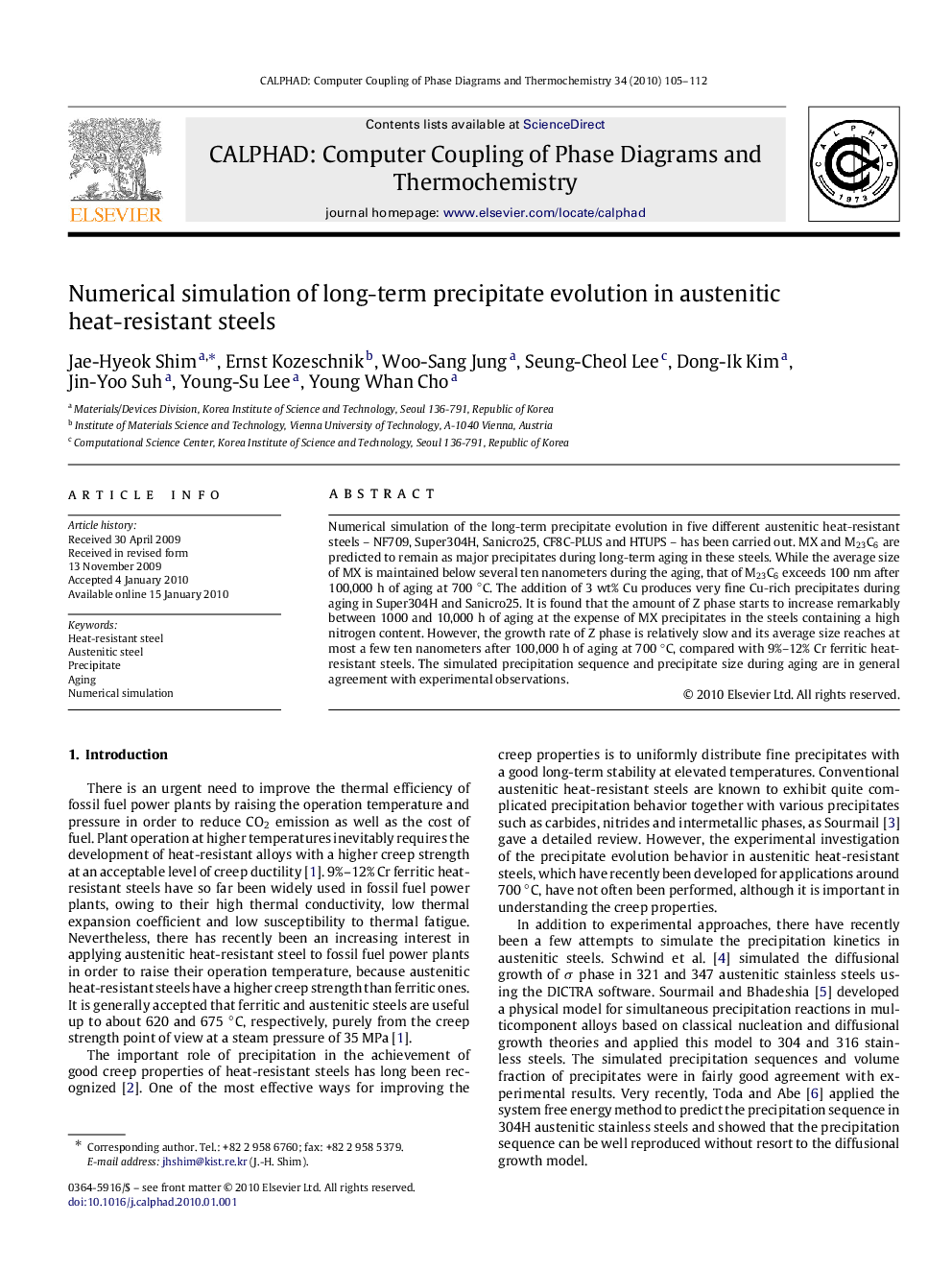| Article ID | Journal | Published Year | Pages | File Type |
|---|---|---|---|---|
| 1559186 | Calphad | 2010 | 8 Pages |
Abstract
Numerical simulation of the long-term precipitate evolution in five different austenitic heat-resistant steels-NF709, Super304H, Sanicro25, CF8C-PLUS and HTUPS-has been carried out. MX and M23C6 are predicted to remain as major precipitates during long-term aging in these steels. While the average size of MX is maintained below several ten nanometers during the aging, that of M23C6 exceeds 100 nm after 100,000 h of aging at 700Â âC. The addition of 3 wt% Cu produces very fine Cu-rich precipitates during aging in Super304H and Sanicro25. It is found that the amount of Z phase starts to increase remarkably between 1000 and 10,000 h of aging at the expense of MX precipitates in the steels containing a high nitrogen content. However, the growth rate of Z phase is relatively slow and its average size reaches at most a few ten nanometers after 100,000 h of aging at 700Â âC, compared with 9%-12% Cr ferritic heat-resistant steels. The simulated precipitation sequence and precipitate size during aging are in general agreement with experimental observations.
Related Topics
Physical Sciences and Engineering
Materials Science
Materials Science (General)
Authors
Jae-Hyeok Shim, Ernst Kozeschnik, Woo-Sang Jung, Seung-Cheol Lee, Dong-Ik Kim, Jin-Yoo Suh, Young-Su Lee, Young Whan Cho,
